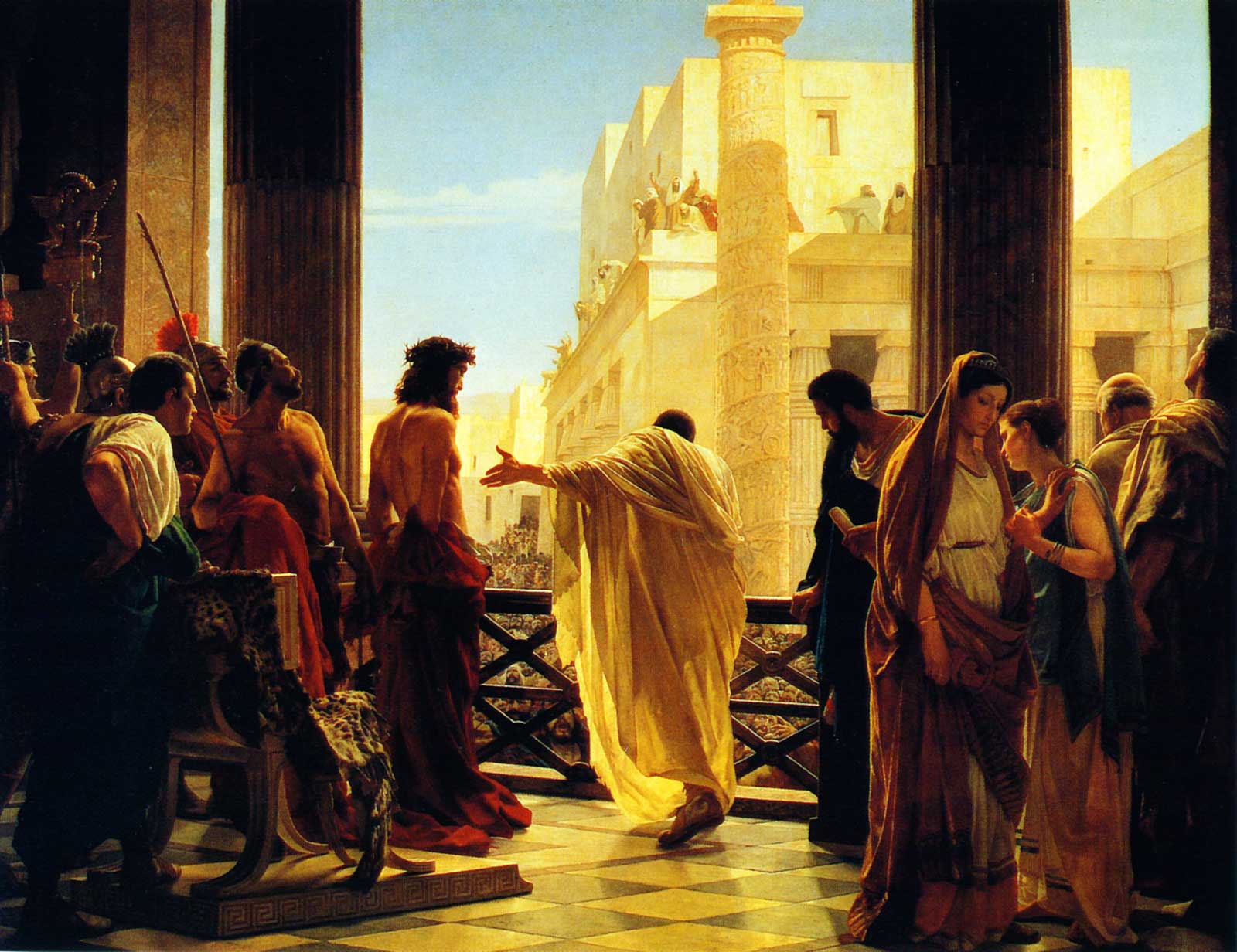Κατὰ Ἰωάννην 19.5
"...ἐξῆλθεν οὖν [ὁ] Ἰησοῦς ἔξω, φορῶν τὸν ἀκάνθινον στέφανον καὶ τὸ πορφυροῦν ἱμάτιον. καὶ λέγει αὐτοῖς Ἰδοὺ ὁ ἄνθρωπος.'"
Ioannes 19:5
"...ut cognoscatis quia in eo nullam causam invenio et purpureum vestimentum et dicit eis ecce homo."
John 19:5 (ESV)
"So Jesus came out, wearing the crown of thorns and the purple robe. Pilate said to them, 'Behold the man!'"
Ecce Homo, the Latin phrase for 'Behold the man' (or 'Look upon the man'), was recorded by the author of the Gospel of John as what Pontius Pilate said as he displayed the thorn-crowned, purple-robed Christ to the crowd in Jerusalem before sending him to be crucified. Actually, the gospel author recorded Pilate as saying Ἰδοὺ ὁ ἄνθρωπος (meaning, unsurprisingly, 'Behold the man'). However, the popularity in the West of the Latin Vulgate meant that Ecce Homo is the line that gained renown. Across the centuries, it has become synonymous with the trial of Jesus and the symbolism surrounding it. Artist after artist has depicted it.
My favorite piece, by far, and possibly my favorite painting, is Ecce Homo by Antonio Ciseri. It is not a stranger to this blog. The image of a thoroughly flogged and humiliated Christ, still standing, while the power of Rome, the Jewish hierarchy, and the Jerusalem mob all coalesce against him, is deeply moving. Ciseri's picture brings it all together, from the viewpoint of someone within the Roman governor's palace, looking out upon the scene of the trial. It is a similar view to the one that I imagine the apostle Peter having when he sneaked into the trial of Jesus before Caiaphas.
On this Palm Sunday, some friends and I blew eggs and painted them with different pictures and designs. I, feeling festive, decided to make mine Ciseri's Ecce Homo. I portray Christ and Pilate (and a column to complete the circle, since you may notice the two are framed by two columns in the painting).
Happy Palm Sunday!





No comments:
Post a Comment